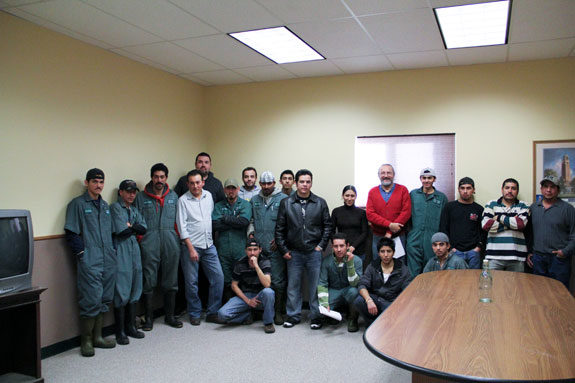When Hispanic dairy workers in South Dakota saw veterinarian Corale Dorn coming, they thought they were in trouble for doing something wrong, but this was before Dorn started using El Lechero. One of the unique characteristics of the magazine, Dorn says, is its bilingual articles. This, she says, aids dairy and vet employees with vocabulary building.
For Dorn, who consults with 11 dairies that range in size from 20 cows to 3,000 cows, the most convenient part of El Lechero is its searchable online database.
“For me, personally, it is being able to go online and look back at previous articles and find new ways to discuss a problem that we might be having at that dairy,” Dorn explains.
Dorn says that one aspect of El Lechero that she likes is that the topics covered may not be immediate, critical issues for her clients, but the articles give her staff the ability to talk with Hispanic workers about prevention, instead of just telling the workers what they were doing wrong.
Dorn says the veterinarians at Dells Veterinary Services in Dell Rapids, South Dakota, where she practices, want to provide the best-quality dairy care that they can. These may be services the clinic can provide or referrals to specialists who can help.
One resource Dorn saw her staff could provide was being able to communicate with Hispanic workers.
“We were scrambling to look for great ways to help educate employees,” Dorn says. “We try to use the Rosetta Stone software, which is grammatically correct, but it has no real agricultural application.”
Dorn started getting Progressive Dairyman more than two years ago. She discovered El Lechero and its possible benefits for her clients when it was provided as an insert in Progressive Dairyman . Now El Lechero is published as its own magazine.
“When El Lechero stopped coming in Progressive Dairyman , I was reading it online. However, I found it was easier to discuss topics if I had the paper copy,” Dorn says.
Dorn decided to sign up for her own El Lechero subscription at the beginning of 2011. Click here to start receiving your own subscription to El Lechero .
Dorn’s vet clinic focuses heavily on calf health. Within the area that she services, most of her clients ear-notch calves to test for bovine virus diarrhea or BVD.
An article in the February 2010 issue covered basic training for vaccinating cattle. The article answered the following questions: Why do we give vaccines? How do vaccines work? How do I read the label?

The article also explained what BVD is and why it is important to test for it.
“We found that if we used that article in conjunction with training the Hispanic employees how to do the procedure, they seemed more invested in doing the procedure the right way,” Dorn says.
“They realized they could prevent a disease that would otherwise make for a longer workday for them in the end.”
Dorn says being able to communicate better bilingually, and using El Lechero as one of the tools to improve her own staff’s Spanish, has built a stronger service team and client relationship.
She says the Hispanic dairy workers are appreciative of her vet staff trying to learn Spanish. They are also very patient with the staff’s “slaughtering of their native language.”
“It is intimidating to get started,” Dorn says. “I think the American people, as a whole, want to make sure we can do things really well before we take the leap. Unfortunately, with communicating bilingually, you have to put yourself out there to practice.”
Now when the Hispanic workers at the dairies Dorn services see her coming, they have less fear and they know she is there to help them do their jobs more effectively. PD










